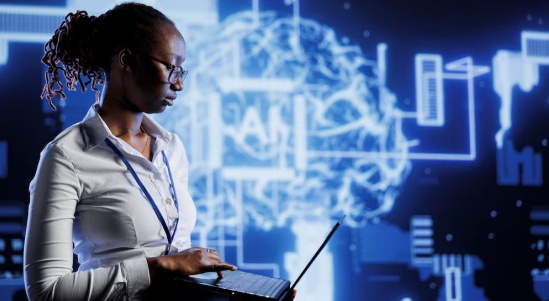- Resources
- What is Online Customer Service?
What is Online Customer Service?

A company that provides excellent customer service has a team that does more than just answer questions and solve problems for customers. Excellent customer service can save and make a business a lot of money. Indeed, improving the customer experience can boost sales revenue by 2-7% and profit by 1-2%.
Here’s an illustration to help you understand:
Paul Brown was flying JetBlue when he casually tweeted that he couldn’t get his Starbucks coffee before boarding the airplane because he was flying out of Boston’s Logan Airport’s smaller terminal.
JetBlue acted quickly after seeing the tweet, and airport customer service representatives delivered a Starbucks venti mocha to his seat on the plane. Brown was overjoyed and praised JetBlue on Twitter.
In a nutshell, this is the power of online customer service – it has made it easier for customers to seek help and for businesses to be more accessible to their customers.
Moreover, Forbes claims that “customer experience is today’s business benchmark.” It means that experience is quickly becoming the new standard for brands. The digital experience is especially crucial, given that e-commerce sales are expected to increase to USD 6.3 trillion in 2023.
According to the Customer Experience Trends Report, 65% of customers prefer to buy from organizations that provide quick and easy online transactions. It includes customer service online as well. It should be as simple to inquire about a product as it is to purchase it. With increasing client interactions online, businesses must go above and beyond to provide a great online experience.
So, how can you build an online customer experience that feels true to your brand, even for customers who have never visited your store or office in person? Let’s find out!
In this article, we will explore:
- 1. What is Online Customer Service?
- 2. Importance of Online Customer Service
- 3. Online Customer Service Vs Online Customer Support
- 4. Types of Online Customer Service
- 5. Tips to Improve Online Customer Service
- 6. How Do CX Platforms Improve Online Customer Service?
- 7. 5 Best Online Customer Service Tools
What is Online Customer Service?
Online customer service is how businesses respond to consumer requests and questions. To efficiently assist their consumers, customer care representatives employ various tools such as live chat, phone calls, emails, and social media. It’s similar to a store’s help desk but online.
Businesses can improve customer service by implementing call-back solutions that quickly respond to their complaints. Corporations prioritize answering your queries and resolving concerns if you are a consumer. The ability to serve consumers swiftly and efficiently is one of the significant characteristics of a customer-centric firm.
So, if your customers have concerns or issues with a product or service from your business, they may contact you online and seek help. Online customer service is not the same as traditional customer service.
Here’s how:
- Interaction over the Internet: Online customer care allows brands and customers to communicate in real-time via customer service chatbots, social media, and even email.
- All-Time Support: Online customer care allows firms to assist and support customers 24 hours a day, seven days a week. Because interactions take place digitally, online customer service is not limited to specific areas or regions.
- Faster Response Time: Traditional customer service may include standing in lines or waiting on a phone call, which can cause delays in response time. Online customer support, on the other hand, is faster. Communication via live chat or online channels can be instant or within minutes.
Importance of Online Customer Service
According to research, 52% of customers always demand fast, personalized, and engaging help. Online customer service can assist you with this. It has various advantages for both organizations and customers:
- Comfort: Customers can get help from the comfort of their own homes or on the road, removing the need for them to visit a physical place.
- Instant Access: Online customer service is available 24 hours a day, seven days a week, allowing users to request assistance anytime, even after regular office hours. Customers in different time zones would appreciate this convenience.
- Transparency and Documentation: Digital interactions, such as chats and emails, clearly record exchanges. It might be helpful for future reference, ensuring that both the consumer and the service provider are on the same page.
- Cost-Effectiveness: Online customer care service can be less expensive than in-person or phone help. It eliminates physical facility requirements and allows support teams to handle more questions with fewer staff members.
- Integration with Technology: Online customer service platforms can work with other digital tools and software to make automation and more in-depth data analysis possible. It makes the service better overall.
- Personalized Assistance: Data-driven insights on users are frequently provided by online platforms. It helps organizations offer more personalized solutions or product recommendations, improving consumer experience.
Online Customer Service Vs Online Customer Support
Customer service differs from customer support in that customer support teams support a product, whereas customer service teams give service to a customer. In addition, support teams are often more involved with the end-to-end customer experience than customer service teams. Both customer service and customer support are concerned with the customer, although they approach assisting differently. This is how they differ:| Point of Basis | Customer Service | Customer Support |
|---|---|---|
| Growth | Except for senior roles, most jobs are entry-level, with little room for advancement. | Aside from management, there are numerous prospects for advancement. |
| Focus | Focuses on customer transactions that are efficient and helpful. | Focuses on enhancing the interface between the client and the product. |
| Key Metrics | Transactional measures such as customer satisfaction, average handle time, and first contact resolution are commonly measured. | Along with transactional indicators, business-related measures such as net promoter score, customer effort score, and churn are also considered. |
| Industries | There are positions available in every industry that serves clients, such as retail, fast food, banking, hotel, and so on. | Positions are frequently available in SaaS and ecommerce firms. |
| Types of Solutions | Customers are directed to existing answers and solutions. | It entails technical issue-solving, troubleshooting, and the discovery of new solutions and answers. |
Types of Online Customer Service
The most common types of online customer service are:
There are several types of online customer service that businesses can offer to their customers. Here are some common types of online customer service:
Social Media Support
Social media sites like Twitter, Facebook, and Instagram have become popular customer support outlets. Customers frequently use social media to discuss their experiences, ask questions, and express concerns. Businesses must have an active and responsive presence to respond to comments and maintain public trust.
Live Chat Support
This feature enables businesses to communicate with customers in real-time on their platforms, websites, or mobile apps. Live chat assists in providing immediate assistance by answering inquiries from consumers who are on the go.
Phone and VoIP Support
Phone and VoIP Support involve direct assistance through traditional phone calls or innovative Voice over Internet Protocol (VoIP) services. These channels enable customers to connect seamlessly with support representatives, ensuring real-time assistance and fostering a personalized and efficient customer service experience
Email assistance
While live chats provide instant gratification, email assistance allows for more in-depth engagement. Customers can submit thorough inquiries, and businesses can respond with targeted and individualized solutions. Furthermore, one-on-one email connection will enable firms to share in-depth resources and how-to guides, ensuring customers feel appreciated and understood.
FAQs and Self-Service Portals
These are areas on websites or apps where customers can discover answers to frequently asked questions. Businesses with a well-organized and thorough FAQ section enable customers to solve their problems without direct engagement, saving both sides time.
Ticketing Systems
Web-based systems that allow customers to submit tickets or requests, which are then tracked and managed by customer service teams to ensure timely resolution. These systems streamline communication, providing a structured approach to addressing customer needs while maintaining a comprehensive record of interactions.
Chatbots and Virtual Assistants
Automated programs that use artificial intelligence (AI) to interact with customers, answer frequently asked questions, and provide basic support. These digital assistants enhance efficiency by offering immediate responses, freeing up human agents to focus on more complex customer issues
Video Support
Utilizing video conferencing or video chat tools to provide face-to-face assistance, product demonstrations, or troubleshooting sessions. Video support adds a personalized touch to customer interactions, bridging the gap between virtual communication and the in-person experience.
Tips to Improve Online Customer Service
Understanding how to correctly accomplish online customer support is critical to delivering a good customer and client experience, from selecting the appropriate help channels to employing online resources for self-service and enabling teams to prioritize customer satisfaction.
Here are the top online customer care best practices to implement, whether you’re just starting with your customer support team or looking for new ideas to keep your strategy fresh.
Ask for feedback
Feedback is an essential component of the online customer support process. Requesting client feedback demonstrates to your customers that you care about their experience and respect their input. You should monitor client feedback regularly and calculate your customer satisfaction (CSAT) score. CSAT surveys at the end of each contact will assist you in gauging customer satisfaction and identifying problems at the moment.
You may also use social media listening tools to hear what customers say about your product or service, even if they do not directly tag you on LinkedIn, Twitter, Threads, or Facebook. CSAT Software can assist you in determining your customer’s views about your brand and provide insight into how to enhance your brand messaging and engagement methods.
Understand how you are performing.
Do you know how long your clients take to receive a first response? Or what is the average time to resolution? How often does a customer have to go back and forth with your team before their questions are satisfactorily answered?
The longer you make clients wait for a response, the more time they have to investigate your competitors’ offerings. It goes without saying that what is measured is managed. Unless you’re currently keeping a close eye on your customer service KPIs, there’s a reasonable probability there’s room for improvement.
Make sure that your support desk is outfitted with comprehensive reporting tools capable of driving the desired results.
Respond as quickly as possible.
One of the top benefits of online customer help is that customers may foretaste immediate, on-the-spot assistance.
For example, if a customer has a brief sizing query, they can ask you via chat to confirm before submitting their order. However, this only works if a customer support professional is ready, trained, and equipped to assist.
One reason for this is due to a lack of staff. Examine your help desk KPIs to gain an understanding of ticket distribution per channel. Then, allocate your agents accordingly based on this analysis.
For example, you may require extra live chat agents during busy business hours to meet your response time benchmarks.
Your technology is also crucial. Agents will be slowed down if they are using older systems. Similarly, if they are navigating numerous layers of the process, even the most basic questions will take longer to answer. Check that you have the proper tools in place before optimizing your operations for efficiency.
Get a Complete View of Your Customers
Using app connections or custom-built apps to access consumer data can help you give more tailored service to customers online. Customer context and data can be pulled into your agent workspace and handled from a single perspective using Ozonetel for proactive customer service.
This provides your representatives with a complete picture of the customer relationship, including previous discussions and purchase history. It also saves them time by removing the need to switch between several systems, which may be a significant pain point for support representatives.
De-Escalate With Care
Customer complaints are unavoidable, but these dispute-resolution tactics will assist you in remaining calm and beginning the process of healing the relationship. You must approach these discussions with sensitivity. You never know what the person on the other end of a debate has been through that may be causing anger and resentment.
Your goal as a customer service representative is to listen carefully and behave correctly, actively working to build customer empathy. It might be tough to manage your emotions, especially if you are exhausted, so drink plenty of water, take breaks, and be gentle with yourself.
Help Customers Help Themselves
Answering frequent inquiries in your self-service help center has a few significant advantages, including the ease of being ready to support consumers 24 hours a day, seven days a week. In fact, 69% of customers prefer to fix as many problems as they can on their own.
Maintain product information in your help center and engage the assistance of your customer support team to deliver the most relevant and helpful information based on incoming client queries. They are familiar with both your clients and the product, so they will have significant insights to share.
Work Toward Personalization
When you’re just getting started, personalizing your support content is usually the last thing on your mind. You might include a customer’s name in your support emails, but is that truly sufficient? Not quite.
Personalization is one online customer service best practice that can significantly impact your team’s overall performance.
Begin small. Behaviorally prompted in-app features, suggestions, and time-based email marketing are excellent ways to make customers feel understood without delving too far into client data.
Additionally, incorporating digital business cards into customer interactions provides a seamless and personalized way for customers to connect with your team, enhancing the experience by offering easy access to relevant information and support.
Reminding clients about an abandoned shopping cart or just remembering what they had in their cart the next time they visit your site via a “recently viewed items” section can make a significant difference.
Meet Your Customers Where They Are
Today, customers expect the flexibility to interact with businesses using their favored communication channels. While some may opt for traditional methods like web forms that generate emails, others prefer sending quick messages via WhatsApp or Instagram DMs.
Simultaneously, strategically incorporating live chat on product pages can effectively draw in new clientele.
In reality, it’s likely a blend of these channels that works best. With an omnichannel customer care approach, you can manage all your service channels in one location and tap into consumer data to tailor your online assistance.
How Do CX Platforms Improve Online Customer Service?
Customer Experience (CX) Platforms assist businesses in monitoring and managing various customer interaction points, such as the company’s website, social media handles, and other communication channels.
According to a Salesforce study, “66% of consumers expect companies to anticipate their needs and make relevant suggestions.” At the same time, a Harvard Business Review report found that “revenue growth for companies with excellent customer experience is higher than that for those with poor CX.”
Here are some more ways that CX platforms can improve your company’s online customer service:
Valuable Customer Insights
The data the CX platform has intelligently separated delivers essential customer insights. Data analysis gives you customer pain spots, reasons for customer discontent, contentment, and attrition.
Furthermore, such data assists the company in improving processes and policies. It also enables the firm to delve deeper into raw customer data to better understand customer behavior. It gives them helpful information for enhancing their product/service and overall customer experience.
Omni Channel Customer Experience
Customers who use different modes of communication necessitate a unified customer view to serve efficiently. Customers may find it inconvenient to resupply the same information. Isn’t supplying an order ID number inconvenient when you phone a customer service helpline?
Businesses can use a CX platform to create a holistic customer experience across different channels such as a mobile app, in-store, email, internet, etc. It also ensures that you don’t miss any talks. Furthermore, the data acquired across these many platforms is centralized to obtain a 360-degree view of the customer.
Higher Customer Retention
Brand familiarity frequently leads to increased customer retention. Customers who are familiar with a brand’s products and services and the values it represents are more inclined to stick with it. It assists firms in developing a loyal customer base and maintaining steady revenue streams, which can be advantageous during economic turmoil.
For example, Tesla, Apple, and Amazon are well-known companies with solid consumer devotion. It enables them to remain competitive regardless of economic or market shifts.
5 Best Online Customer Service Tools
LiveAgent
LiveAgent began with a focus on live support channels, primarily chat. They’ve added more tools over time, creating a multi-channel customer support product.
They have an omnichannel inbox where you can see customer conversations from various channels. If you answer many calls, you can set up an IVR system. They also provide different reporting options to help you better understand team performance and some automation and integrations to help you get more done.
Ozonetel
With Ozonetel’s robust CX platform, businesses can offer chat, phone, and email support irrespective of call volume, ensuring that no customer feels neglected. Ozonetel’s omnichannel solution is useful for online customer service as it offers a comprehensive suite of advanced communication tools that enable businesses to conduct phone calls over the internet, manage omnichannel interactions with ease, and route calls and chats to the right agent in the right department irrespective of which channel they use.
The solution also offers AI-based self-service, sticky agents, and agent assist features that help businesses to streamline transactional messaging like notifications and reminders to mobile payments, automate feedback and surveys, and integrate text-based and voice-based customer service.
Help Scout
Having a multifaceted tool is advantageous since customer service is a multifaceted discipline. Help Scout provides a shared inbox, knowledge base software, live chat, and other features. It’s a full-service customer support platform.
Workflows and saved replies, for example, help your team save time by automating manual tasks. Customers can find answers independently with self-service tools like Beacon, reducing support volumes for your team.
Additionally, robust reporting provides insight into the areas where you excel — and where you can improve — all of which contribute to a better overall customer and agent experience.
HelpDocs
In recent years, there has been a greater emphasis on self-service options. It’s very cost-effective, and many people prefer self-service tools for support — up to 67% of users.
Customers can use knowledge bases to find answers independently, which means faster resolution times and fewer tickets for your team.
For those looking to invest in a standalone piece of knowledge base software, HelpDocs is a strong contender. Their simple pricing, robust feature set, and simple interface make creating your first knowledge base a breeze.
Zendesk
Zendesk is a ticketing system for managing customer interactions. You can manage email, Twitter, and Facebook conversations with any Zendesk plan. You can also manage phone and message conversations on their more expensive plans.
Though Zendesk is typically associated with larger teams due to the product’s relative complexity, resources required for initial setup, and overall cost, they offer a few lower-cost plans.
Those lower-cost plans lack some features but should cover the essentials for those who primarily need email support.
In Conclusion
Having good online customer service is really important these days because we’re not meeting face-to-face as much with technology taking over. But even though things are changing, it’s still crucial to build strong relationships with customers. Online customer service isn’t just about answering questions; it also means choosing the right tools like chat software, email management, and a good feedback system.
If you make smart decisions and invest in the right tools, your online customer service can go from good to great. As we navigate the digital age, it becomes clear that the future of customer service lies in leveraging technology to foster meaningful connections and enhance overall customer experiences.
Want to see what Ozonetel can do for your company? Sign up today for a free 21-day trial.
Prashanth Kancherla
Chief Operating Officer, Ozonetel Communications
Over the past decade, Prashanth has worked with 3000+ customer experience and contact center leaders...
Chief Operating Officer, Ozonetel Communications
Over the past decade, Prashanth has worked with 3000+ customer experience and contact center leaders to comprehensively understand the need for effective and efficient customer communications at every step of their journey with a brand. Deeply embedded in today’s CCaaS ecosystem, he has been instrumental in Ozonetel's growth and contributed in various roles including product management, sales, and solution architecture.
Related resources
Lorem ipsum dolor sit amet, consectetur adipiscing elit. Ut elit tellus, luctus nec ullamcorper mattis, pulvinar dapibus leo.







